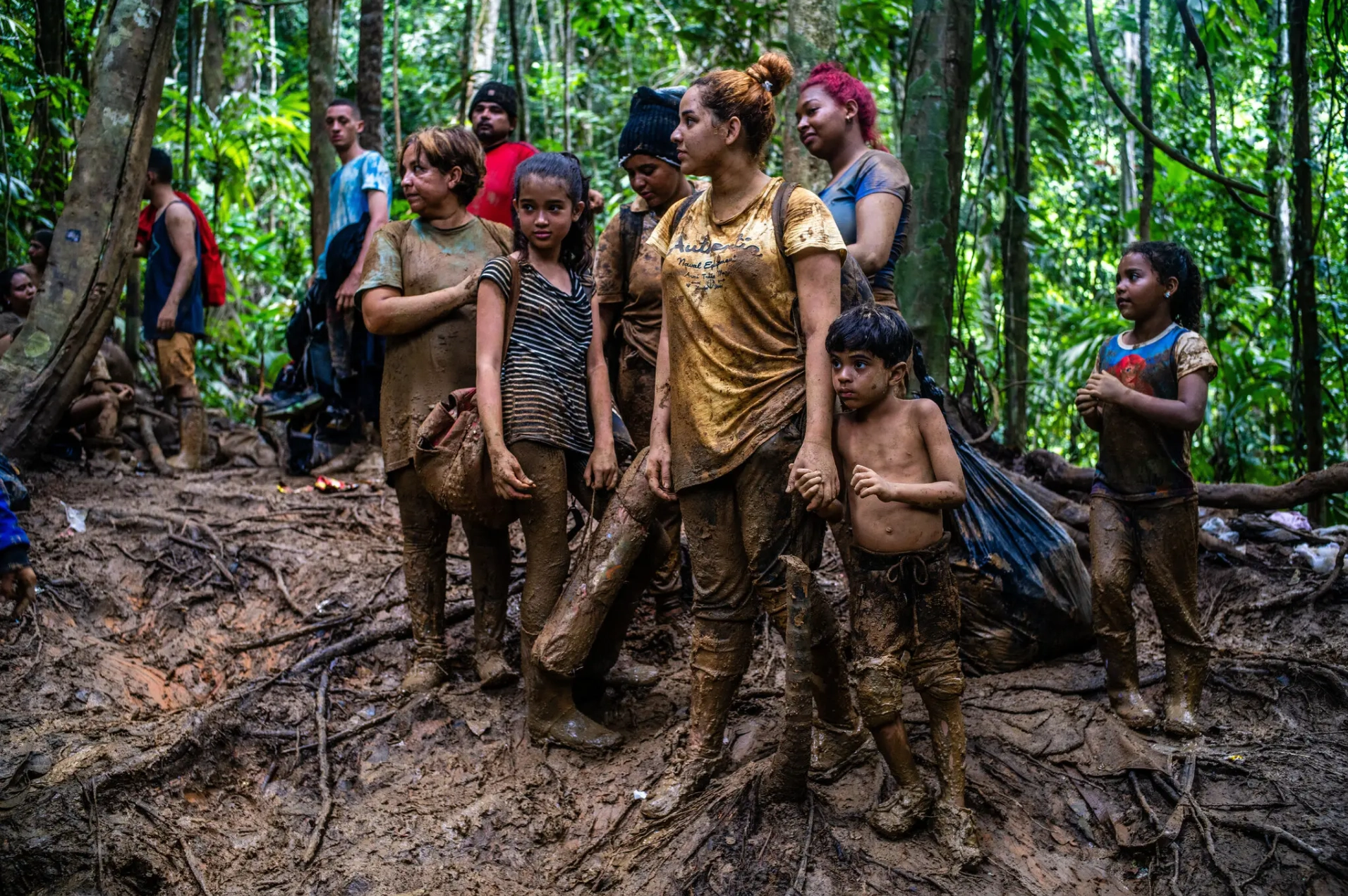
Some dictionaries translate the German word wandermut as wanderlust or hiking bravery. The word, however, has become a brand name for small groups of European tourists who decide to go into hell. And the latter word, according to the testimony of thousands of Latin American migrants, is none other than the Darién Jungle.
In fact, the news about the German company called Wandermut which offers two-week packages, framed in adventure tourism, to cross this inhospitable and dangerous jungle area that separates Colombia and Panama, did not cause much commotion. The normalization of public opinion in Latin America about the Darién also left in the background that some 200,000 migrants passed through there in the first half of 2023 alone.
By cruel paradox, the news about the Europeans who go to the Darién for tourism coincided in time with the much more serious fact, and that should alert various governments and authorities: a number four times higher than that recorded in the first half of 2022, crossed the jungle this year. The tourists were in search of adrenaline, we would say. Thousands of migrants are in search of a dream or fleeing unsuspecting conditions in their countries of origin.
With satellite phones and the promise that a helicopter will be able to rescue them in a short time if an accident happens to them, the tourists pay Wandermut the sum of 3,600 euros, plus the ticket to Panama, according to company spokespersons. The testimonies of migrants once they cross the jungle, leave evidence of people who have died during the crossing and whose bodies are simply left in the Darién.
Recently, a humanitarian expert in Panama recorded the testimony of a Venezuelan family whose mother and two daughters were raped by a gang of criminals, while forcing the husband and a teenage son to witness the act. The Darién is hell, the expert concluded by way of summary.
There are no formal roads or highways in the Darién jungle, which separates Colombia from Panama. During their journey, migrants face criminal gangs and the adversities generated by nature itself. Nevertheless, this year is on track to set a new record for the number of migrants crossing the Darién and then moving through Central America and Mexico on their way toward the United States.
In early July, Panamanian immigration authorities confirmed that just over 200,000 people entered Panama on foot after passing through the Darién in the first half of 2023 alone. This figure for migration is four times higher than that of a similar period in 2022 when a record had already been set compared to previous years. The migratory flow, far from decreasing, has grown.
The total number of migrants who crossed the Darién jungle in 2022 was 248,284, a number that was already a milestone. However, if the pace of the first half of 2023 continues, it is estimated that half a million people will have crossed this dangerous gap by the end of this year.
Among the migrants who have crossed the Darién so far this year, more than half are Venezuelans (103,028), followed by Haitians (33,553), Ecuadorians (25,925), Chinese (8,964), and Colombians (6,484). Other numerous nationalities are Chileans, Indians, and Brazilians.
According to figures from Panama’s migration directorate, 22,102 migrants entered through the Darién in 2019. In 2020 the figure dropped to less than ten thousand due to the measures taken because of the pandemic, and in 2021 there was an explosive rise to 133,726 and reached 248,284 in 2022. Panamanian authorities have warned about the risks of crossing this jungle: “although migration is a universal right, it is important to carry out mobility in a regular, orderly and safe manner”.
The president of the Washington Office on Latin America (WOLA), Carolina Jiménez, highlighted the massive presence of Venezuelans leading this migratory flow recently. In the last year and a half, more than 250,000 Venezuelans have crossed the Darién.
According to various organizations specializing in human mobility and human rights, the Darién jungle has become one of the most dangerous migration crossing points in the world. The coordinator of attention to the migrant population of the organization Fé y Alegría, Elías Cornejo, affirms that the Darién gap is a jungle region, which for geopolitical reasons, within the framework of the Cold War, was kept impregnable, to avoid the expansion of the Colombian guerrilla toward Panama.
At present, according to this Panamanian expert, it is technically possible to open a walkway to control the migration flow, but there is no political will. This should be the first action to take in order to create a more secure crossing, in addition to allowing greater control of this incessant flow.
For Jiménez, this situation should lead many governments in the region to ask themselves about the reasons for the massive expulsion of citizens in countries such as Venezuela, Haiti, Cuba, and now also Ecuador. Such a debate does not seem to be on the public agenda at the moment. Meanwhile, the hell is still there, in the Darién, and now also tourists have joined, as astonishing as this may seem.
*Translated from Spanish by Janaína Ruviaro da Silva


